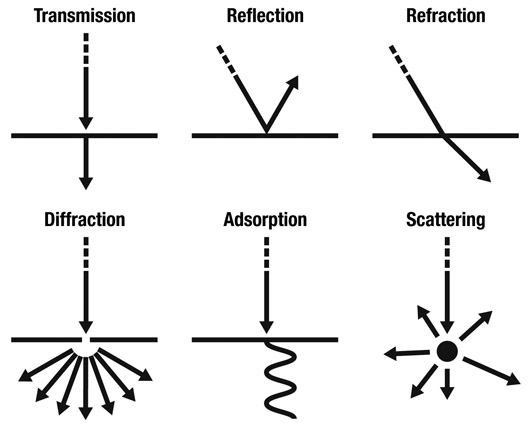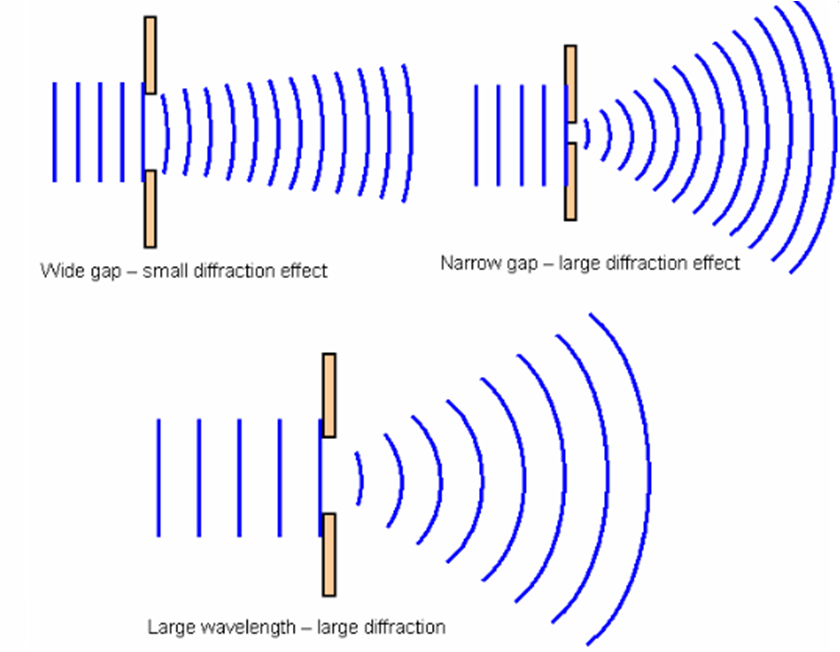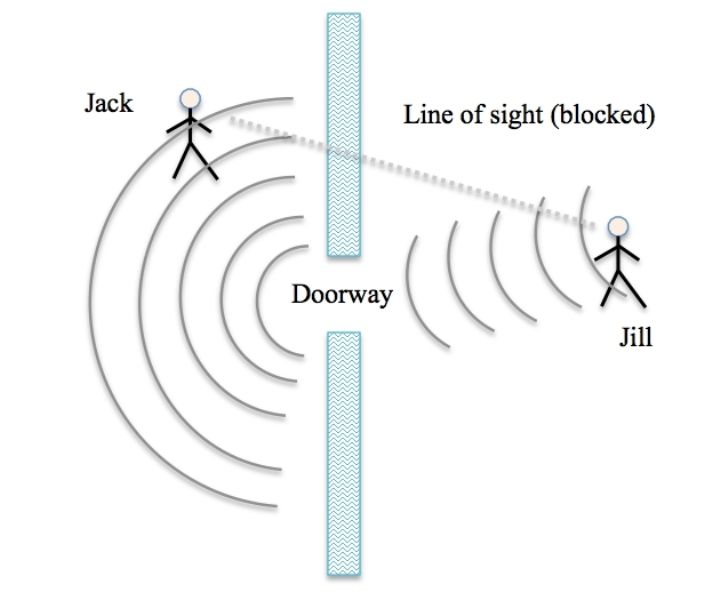

If the ray meets the boundary at an angle to the normal, it bends towards the normal. Glass is denser than air, so a light ray passing from air into glass slows down. In general, the denser the transparent material, the more slowly light travels through it. The density of a material affects the speed that a wave will be transmitted through it. Light passing through a single slit forms a diffraction pattern somewhat different from those formed by double slits or diffraction gratings. The waves slow down as they enter the shallow water which causes the wavelengths to shorten. Water waves will change direction at a boundary between deep and shallow water. Refraction can cause optical illusions as the light waves appear to come from a different position to Diffraction describes the event of waves encountering an obstacle and the consequential bending around the object. A ray diagram showing refraction of light at the boundary between air and glass It is important to be able to draw ray diagrams to show the refraction of a wave at a boundary. Refraction is the change in direction of a wave at such a boundary. Light waves may change direction at the boundary between two transparent materials.

than those of short wave or VHF radio, or television.Different materials have different densities. It can be regarded as an extreme case of Fresnel diffraction but is of more practical. In practice it involves parallel beams of light. Long wave radio signals are much less affected by buildings, hills, tunnels etc. A form of diffraction in which the light source and the receiving screen are in effect at infinite distances from the diffracting object, so that the wave fronts can be treated as planar rather than spherical. The meaning of DIFFRACTION is a modification which light undergoes especially in passing by the edges of opaque bodies or through narrow openings and in which the rays appear to be deflected also : a similar modification of other waves (such as sound waves) or of moving particles (such as electrons). The greater the wavelength, the greater the diffraction.ĭiffraction affects radio and television signals. The extent of the diffraction also depends on the wavelength of the waves. Waves passing through a wide gap (gap width greater than the wavelength) The on-axis gain is: G(0, 0) 4 2A (gain of uniformly illuminated aperture area A) Equation (11.1.18) applies to any uniformly illuminated aperture antenna, and such antennas have on-axis effective areas A (, ) that approach their physical areas A, and have peak gains Go 4A / 2. It is the phenomenon whereby light or sound waves bend around small obstacles or. Waves passing through a narrow gap (gap width less than the wavelength)Ī gap width much larger than the wavelength causes little spreading eg light waves passing through a doorway. Classical physics gives us a definition of diffraction in terms of waves. The wavelength is unchanged after diffraction.Ī gap width similar to the wavelength of the waves passing through causes a lot of spreading, eg sound waves passing through a doorway. The extent of the spreading (diffraction) depends on how the width of the gap compares to the wavelength of the waves. This is diffraction - the spreading out of waves when they go through a gap, or past the edge of a barrier. The waves always 'spread' to some extent into the area beyond the gap. This may seem obvious but what happens on the far side of the gap or barrier is not so straightforward.


When waves meet a gap or an edge in a barrier, they continue through the gap or past the edge of the barrier.


 0 kommentar(er)
0 kommentar(er)
